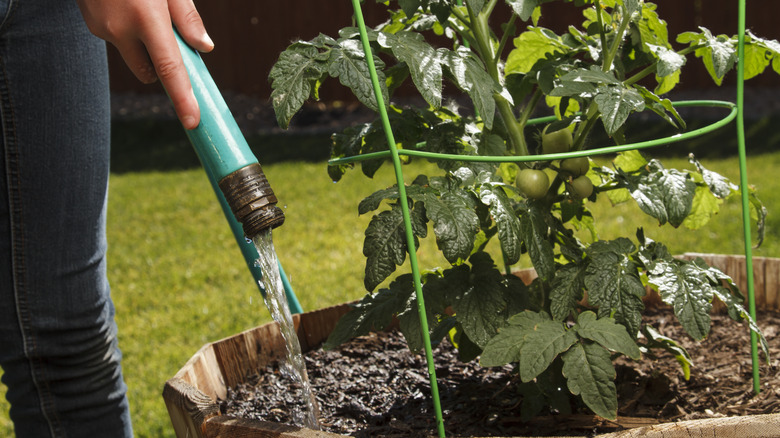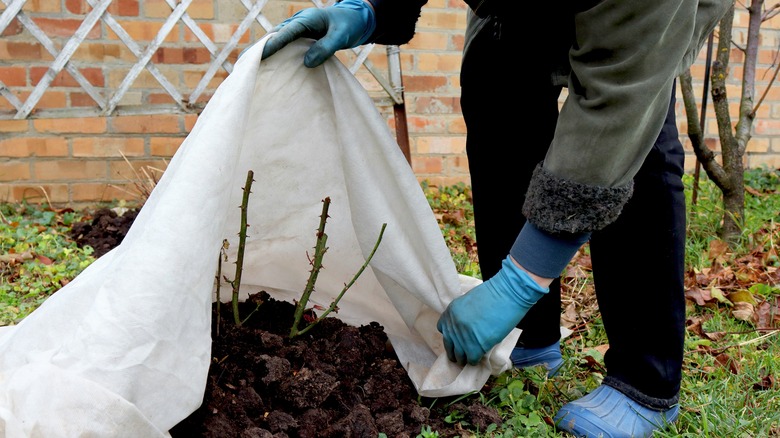An unexpected frost in the spring or fall can cause a whole lot of hard work you put into your garden go out the door, and a hard freeze can wipe out your crop entirely. Cold temperatures can cause buds, flowers, and shoots to curl up and die due to the water freezing inside the plant cells that can eventually rupture – when this happens, the foliage will appear scorched and brown or black in color. A light frost, which is when temperatures are around 32 degrees Fahrenheit, can kill all tender plants like tomatoes, and a hard freeze, which is when temperatures dip below 28 degrees Fahrenheit, can kill hardier plants such as spinach or kale.
Checking the weather forecast and planning ahead are the best ways of protecting your plants from a frost, and there’s a particular method that might catch you by surprise. While it may seem illogical, watering your plants the day before is a good measure to take: it can help your plants stay resilient, because moist ground stays warmer than dry soil.
Water your plants the day before cold temperatures arrive

Watering your plants the day before a frost will help insulate the plant and root structure and lessen the likelihood of cold injury occurring. Cold injury is when damage to the plant occurs from rapid changes in the air and ground temperature.
Before you begin, make sure the temperature outside is above 40 degrees Fahrenheit. It is recommended to water the morning before a frost instead of the afternoon or evening to allow the water to properly settle in the soil. Be mindful to only water the ground and try to avoid getting the leaves wet as much as you can. Water on the foliage can later turn to frost and kill your plants.
After watering your plants, prepare protective materials to place over your crops. There are different methods on how to cover plants from frost, but for a larger garden space, use a blanket for the first layer, and then add a plastic sheet on top. Anchoring down the coverings will retain heat and keep the plants warm during the cold spell.
Apply water the day after a frost to thaw out the soil

If you did not water your plants before the overnight frost set in, don’t panic — adding water the next day can also be beneficial. Water that’s still in the soil may be frozen and cannot reach the roots of the plants, which can dry them out and cause plants to become dehydrated. Applying water will help thaw the soil. It is best to water in the afternoon or evening the day after a frost, so plants have time to warm up and raise their temperature.
Further, adding a layer of mulch around your plants before or after a frost can do wonders for your garden — the organic material will increase heat retention and maintain soil moisture for plants, which will help them recover from a cold snap.
With all that said, unfortunately, some of your plants still likely won’t make it if the cold is severe and sudden enough. In this case, it’s best to count your losses: just remember to remove all the dead plants before starting a new garden when temperatures warm up again.